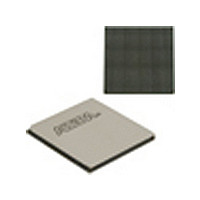EP4SGX530HH35C2N Altera, EP4SGX530HH35C2N Datasheet - Page 1019

EP4SGX530HH35C2N
Manufacturer Part Number
EP4SGX530HH35C2N
Description
IC STRATIX IV FPGA 530K 1152HBGA
Manufacturer
Altera
Series
Stratix® IV GXr
Datasheets
1.EP4SGX110DF29C3N.pdf
(80 pages)
2.EP4SGX110DF29C3N.pdf
(1154 pages)
3.EP4SGX110DF29C3N.pdf
(432 pages)
4.EP4SGX110DF29C3N.pdf
(22 pages)
5.EP4SGX110DF29C3N.pdf
(30 pages)
6.EP4SGX110DF29C3N.pdf
(72 pages)
7.EP4SGX530HH35C2N.pdf
(1145 pages)
Specifications of EP4SGX530HH35C2N
Number Of Logic Elements/cells
531200
Number Of Labs/clbs
21248
Total Ram Bits
27376
Number Of I /o
564
Voltage - Supply
0.87 V ~ 0.93 V
Mounting Type
Surface Mount
Operating Temperature
0°C ~ 85°C
Package / Case
1152-HBGA
Family Name
Stratix® IV
Number Of Logic Blocks/elements
531200
# Registers
424960
# I/os (max)
560
Process Technology
40nm
Operating Supply Voltage (typ)
900mV
Logic Cells
531200
Ram Bits
28033024
Operating Supply Voltage (min)
0.87V
Operating Supply Voltage (max)
0.93V
Operating Temp Range
0C to 85C
Operating Temperature Classification
Commercial
Mounting
Surface Mount
Pin Count
1152
Package Type
FCHBGA
Lead Free Status / RoHS Status
Lead free / RoHS Compliant
Number Of Gates
-
Lead Free Status / Rohs Status
Compliant
Available stocks
Company
Part Number
Manufacturer
Quantity
Price
- EP4SGX110DF29C3N PDF datasheet
- EP4SGX110DF29C3N PDF datasheet #2
- EP4SGX110DF29C3N PDF datasheet #3
- EP4SGX110DF29C3N PDF datasheet #4
- EP4SGX110DF29C3N PDF datasheet #5
- EP4SGX110DF29C3N PDF datasheet #6
- EP4SGX530HH35C2N PDF datasheet #7
- Current page: 1019 of 1145
- Download datasheet (29Mb)
Chapter 2: Transceiver Design Flow Guide
Architecture
Clocking
© November 2009 Altera Corporation
f
f
The Stratix IV GX transceiver is clocked by various input reference clocks, for
example:
■
■
■
Identify the transceiver channels input reference clock sources, for example:
■
■
■
For transceiver-FPGA interface clocking:
■
For information about transceiver specifications, refer to the
Characteristics of Stratix IV Devices
■
■
For information about transceiver clocking, refer to the
chapter.
After you identify the required transceiver parameters, start the implementation and
integration phase.
Dedicated transceiver reference clock (refclk) pins. Altera recommends using
refclk pins whenever possible because the refclk pins yield reduced jitter on
the transmitted data.
Clock sources connected to global clock lines.
Clock outputs from the phase-locked loops (PLLs) in the FPGA fabric.
Ensure that your selected device has the required number of input reference clock
resources to implement your design.
Ensure that the transceiver clock input supports the required I/O standards.
Ensure that the clocking restrictions work with your selected device:
■
■
■
Ensure that the transceiver-FPGA interface clock frequency limits meet your
system requirements.
Identify the clocking scheme to clock the transceiver data to the logic in the FPGA
fabric. For example, if your design has multiple transceiver channels that run at
the same data rate and are connected to the one upstream link, you might be able
to use a single transceiver-FPGA clock to provide clocks to the transceiver data
path, which can conserve clock routing resources.
If you are using Basic (PMA direct) mode, determine whether you require a
left/right PLL to provide phase shifted clocks to the FPGA fabric. The left/right
PLL clocks the data received and transmitted between the transceiver and the
FPGA fabric interface and may be required to meet the timing requirements of the
data transfer.
Check whether the allowed frequencies for the transceiver input reference
clocks meet your system requirements.
If you use the PLL cascade clock, understand its restrictions.
If you are using the auxiliary transmit (ATX) PLL, understand the
recommendations for the input reference clock sources and the restrictions on
data rate ranges supported by the ATX PLL.
chapter.
Stratix IV Transceiver Clocking
Stratix IV Device Handbook Volume 3
DC and Switching
2–5
Related parts for EP4SGX530HH35C2N
Image
Part Number
Description
Manufacturer
Datasheet
Request
R

Part Number:
Description:
CYCLONE II STARTER KIT EP2C20N
Manufacturer:
Altera
Datasheet:

Part Number:
Description:
CPLD, EP610 Family, ECMOS Process, 300 Gates, 16 Macro Cells, 16 Reg., 16 User I/Os, 5V Supply, 35 Speed Grade, 24DIP
Manufacturer:
Altera Corporation
Datasheet:

Part Number:
Description:
CPLD, EP610 Family, ECMOS Process, 300 Gates, 16 Macro Cells, 16 Reg., 16 User I/Os, 5V Supply, 15 Speed Grade, 24DIP
Manufacturer:
Altera Corporation
Datasheet:

Part Number:
Description:
Manufacturer:
Altera Corporation
Datasheet:

Part Number:
Description:
CPLD, EP610 Family, ECMOS Process, 300 Gates, 16 Macro Cells, 16 Reg., 16 User I/Os, 5V Supply, 30 Speed Grade, 24DIP
Manufacturer:
Altera Corporation
Datasheet:

Part Number:
Description:
High-performance, low-power erasable programmable logic devices with 8 macrocells, 10ns
Manufacturer:
Altera Corporation
Datasheet:

Part Number:
Description:
High-performance, low-power erasable programmable logic devices with 8 macrocells, 7ns
Manufacturer:
Altera Corporation
Datasheet:

Part Number:
Description:
Classic EPLD
Manufacturer:
Altera Corporation
Datasheet:

Part Number:
Description:
High-performance, low-power erasable programmable logic devices with 8 macrocells, 10ns
Manufacturer:
Altera Corporation
Datasheet:

Part Number:
Description:
Manufacturer:
Altera Corporation
Datasheet:

Part Number:
Description:
Manufacturer:
Altera Corporation
Datasheet:

Part Number:
Description:
Manufacturer:
Altera Corporation
Datasheet:

Part Number:
Description:
CPLD, EP610 Family, ECMOS Process, 300 Gates, 16 Macro Cells, 16 Reg., 16 User I/Os, 5V Supply, 25 Speed Grade, 24DIP
Manufacturer:
Altera Corporation
Datasheet:












